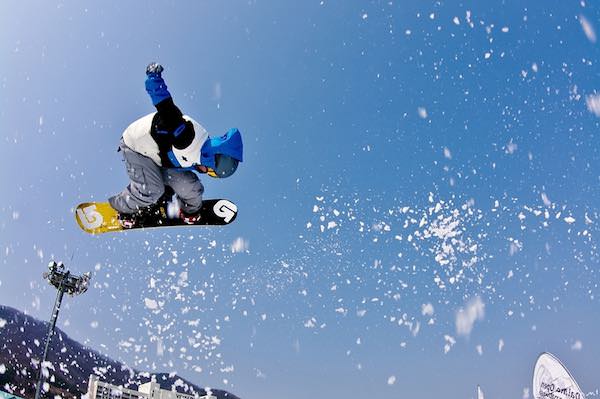
[Image above] Credit: 21KIMMI; Flickr CC BY-ND 2.0
This week is National Engineer’s Week, a time set aside to call out all the incredible stuff that engineers do for our world.
And there’s no shortage of impressive science and engineering—and even unexpected engineering—in PyeongChang right now, as the 2018 Winter Olympics continue in this final week of competition.
While we marvel at the displays of human fitness and skill at the games, it’s easy to forget how much engineering goes into making some of the events even possible.
One of the newest Olympics events, the snowboarding big air competition, is happening this week.
The fact that these athletes are willing to hurdle themselves off a slippery slope and high into the air—doing twists, turns, and flips in the midst—by itself is impressive, but even more so is the engineering of the 49-m-high jump itself.
The ramps are built piece by piece—with some 20,000 metal and wood pieces—to construct a solid foundational structure that can support the additional weight of snow and ice on top.
And it’s not a slight dusting of snow that’s added to the top—more like hundreds of tons of snow that is used to manually pack, sculpt, and smooth out the surface of the track.
As if that wasn’t enough of a structural challenge in itself, inrun ramps for snowboarding big air jumps typically tilt down a sizeable 38–39º angle, providing boarders with the momentum to reach speeds of 35–40 mph, according to a recent Wired story.
And it’s not just the engineering of the jump itself that’s important—placement of the landing ramp also is critical to allow athletes to safely land multi-story jumps without smashing their bones or boards.
The carefully placed and graded landing ramp is engineered to decelerate riders, transforming their massive downward momentum as they come off a big air jump into forward momentum.
In total, snowboarding big air runs require a huge footprint of 400–500 feet in length—longer than a standard American football field, which stretches 360 feet long—and, obviously, some really impressive engineering to make it possible.
Of course, there’s also some impressive materials engineering that goes into making the snowboards that will complete these jumps in the first place.
Snowboards are composites, built from several layers of materials sandwiched tightly together to give the board stiffness, flexibility, and a host of other properties.
Usually, boards consist of layers of fiberglass, wood, foam, metal, and more—but, in a recent project, some intrepid engineering from the guys at Signal Snowboards built a snowboard entirely out of glass. It reminds me a lot of this glass skateboard that we shared a couple of years ago.
Check out the entire process—from cutting, shaping, treating, and finally slope-testing the glass—in the video below. What do you think—will it shatter or shred?

Credit: Network A; YouTube
Did you find this article interesting? Subscribe to the Ceramic Tech Today newsletter to continue to read more articles about the latest news in the ceramic and glass industry! Visit this link to get started.
Author
April Gocha
CTT Categories
- Construction
- Glass
- Material Innovations


